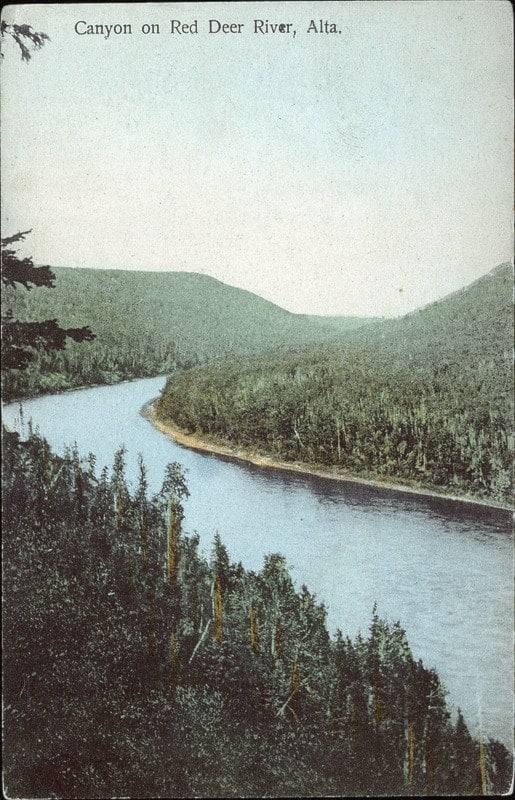Recently, two life-long and highly respected Red Deer residents, Ruth and Dorothy Bower, donated 477 acres of land on the west bank of the Red Deer River to the Nature Conservancy of Canada. Owned by the Bower family for nearly a century, this beautiful site sits at the north end of the Red Deer River Canyon, a short distance east of the Red Deer.
What has been largely overlooked in the media coverage of this magnificent gift is the fact that at the turn of the last century, a national park was almost established at the Canyon.
The Red Deer River Canyon is a unique, but relatively young (geologically speaking) natural feature. It was created near the end of the last Ice Age. As the vast glacial sheets retreated northwards, the meltwaters were prevented by the ice from following the course of the pre-glacial Red Deer River (the old riverbed now forming what is known as the Chain Lakes near Ponoka and New Norway).
As a result, a massive Glacial Lake Red Deer was formed, bounded the glaciers to the north, the Divide and Hunting (Horn and Antler) Hills to the east and south, and Poplar Ridge to the west.
Water can only be held back for so long. Eventually, the massive pent-up meltwaters created a gap through the Divide Hills, a short distance downstream from where the current Blindman River enters the Red Deer. The sudden rush of water cut the dramatic new channel that is the Red Deer River Canyon.
Not surprisingly, this spectacular feature was a major landmark in the region. It therefore attracted a great deal of attention over the subsequent millennia. Many of the First Peoples hunted and camped in and around the Canyon. Early legends developed about the origin of this unusual feature.
There is a sandstone ridge, jutting into the Canyon, which is usually called the Hogsback, because of the roundness of the top and steep cliff sides. The east end of this ridge became widely known as the Old Man or the Faces due to its strong resemblance to the face of an old man.
Until they became victim to ongoing erosion, there used to be carvings in the sandstone of the Hogsback and Faces, some of which could be dated back to the early 1800s, if not older.
In the 1860’s, the famous missionaries, George and John McDougall, together with their friend Peter Erasmus, were hunting ducks in the Canyon. John accidentally dropped his gun, causing near fatal wounds to his father George. Fortunately, George eventually recovered. However, while John and Peter were waiting for him to recuperate, they panned for gold and found some promising evidence of it in the gravel bars.
In 1900, Captain William Cottingham became the new Dominion Lands Agent in Red Deer. He was impressed by the beauty and dramatic appearance of the Canyon. In March 1903, he made application to the Department of the Interior to have 4,000 acres at the Canyon set aside as a national park.
As often happens, the wheels of bureaucracy moved slowly. However, Captain Cottingham was not one to let a good idea drop. He kept lobbying the department. He eventually received what was described as “reasonable assurances that the request would be granted.”
Disaster struck in 1910 when a major fire broke out. It burned for almost two weeks. A large expanse of the old-growth spruce forest, at the south west end of the Canyon, was consumed.
Then, on December 13, 1913, Captain Cottingham suddenly passed away. While there was a notation in his obituary that his dream of creating a Red Deer River Canyon national park might still happen, without his ongoing lobbying, the proposal faded away.
In 1958, the Crystal Canyon Ski Hill was created on the west side of the Canyon, north of the Hogsback. Now known as the Canyon Ski Hill, it remains a major regional recreational facility.
Now, thanks to the generosity, and strong commitment to the environment, of Ruth and Dorothy Bower, a significant portion of the Canyon area, with a beautiful vista and an incredible diversity of flora and fauna, has been preserved for future generations.
Red Deer historian Michael Dawe’s column appears Wednesdays.
